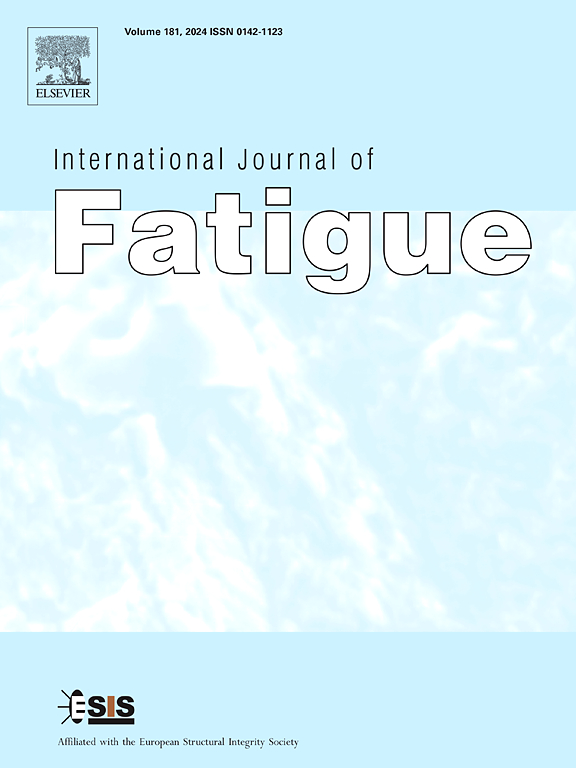A compliance-based method for correcting fatigue crack growth data in the presence of residual stresses
IF 5.7
2区 材料科学
Q1 ENGINEERING, MECHANICAL
引用次数: 0
Abstract
Variations of residual stress fields in a fatigue test specimen and/or across specimens influence the fatigue crack growth rate measurements. Therefore, these variations can contribute significantly to the scatter of fatigue properties obtained on specimens, such as additively manufactured specimens without stress relief, specifically at low stress intensity factor range. To address this problem, a new compliance-based method is developed for correcting fatigue crack growth data in the presence of a residual stress fields of variable magnitude. It is based on the theoretical modelling of the propagation of an edge crack in an elasto-plastic material subjected to cyclic loading of a constant amplitude. The method is demonstrated for compact tension super duplex stainless steel (SDSS) and aluminium specimens tested without post-fabrication heat treatment. The method can be applied for both the evaluation of residual stress fields in fatigue specimens and obtaining the intrinsic fatigue properties of materials.
在残余应力存在的情况下,修正疲劳裂纹扩展数据的一种基于柔度的方法
疲劳试样内和/或试件间残余应力场的变化影响疲劳裂纹扩展速率的测量。因此,这些变化可以显著地促进试样疲劳性能的分散,例如无应力释放的增材制造试样,特别是在低应力强度因子范围内。为了解决这一问题,提出了一种新的基于柔度的方法,用于校正存在可变大小残余应力场的疲劳裂纹扩展数据。该方法基于弹塑性材料在恒幅循环载荷作用下边缘裂纹扩展的理论模型。该方法被证明是紧致拉伸超级双相不锈钢(SDSS)和铝试样测试没有后加工热处理。该方法既可用于评估疲劳试样的残余应力场,也可用于获取材料的本征疲劳性能。
本文章由计算机程序翻译,如有差异,请以英文原文为准。
求助全文
约1分钟内获得全文
求助全文
来源期刊

International Journal of Fatigue
工程技术-材料科学:综合
CiteScore
10.70
自引率
21.70%
发文量
619
审稿时长
58 days
期刊介绍:
Typical subjects discussed in International Journal of Fatigue address:
Novel fatigue testing and characterization methods (new kinds of fatigue tests, critical evaluation of existing methods, in situ measurement of fatigue degradation, non-contact field measurements)
Multiaxial fatigue and complex loading effects of materials and structures, exploring state-of-the-art concepts in degradation under cyclic loading
Fatigue in the very high cycle regime, including failure mode transitions from surface to subsurface, effects of surface treatment, processing, and loading conditions
Modeling (including degradation processes and related driving forces, multiscale/multi-resolution methods, computational hierarchical and concurrent methods for coupled component and material responses, novel methods for notch root analysis, fracture mechanics, damage mechanics, crack growth kinetics, life prediction and durability, and prediction of stochastic fatigue behavior reflecting microstructure and service conditions)
Models for early stages of fatigue crack formation and growth that explicitly consider microstructure and relevant materials science aspects
Understanding the influence or manufacturing and processing route on fatigue degradation, and embedding this understanding in more predictive schemes for mitigation and design against fatigue
Prognosis and damage state awareness (including sensors, monitoring, methodology, interactive control, accelerated methods, data interpretation)
Applications of technologies associated with fatigue and their implications for structural integrity and reliability. This includes issues related to design, operation and maintenance, i.e., life cycle engineering
Smart materials and structures that can sense and mitigate fatigue degradation
Fatigue of devices and structures at small scales, including effects of process route and surfaces/interfaces.
 求助内容:
求助内容: 应助结果提醒方式:
应助结果提醒方式:


